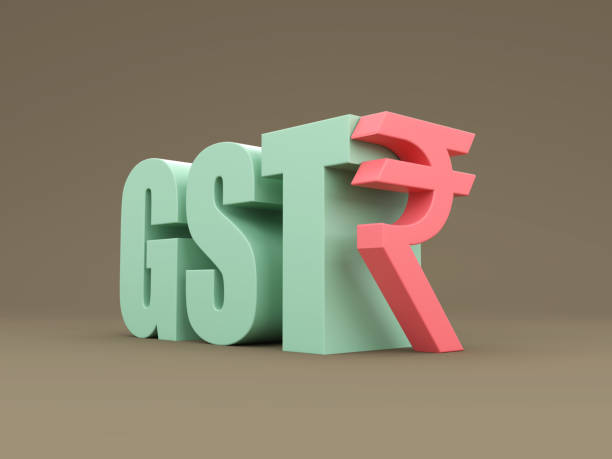Life has a funny way of surprising us — sometimes in beautiful ways, and sometimes with unexpected expenses. A medical emergency, sudden job loss, or urgent repair can quickly turn peace into panic if you don’t have money set aside.
That’s where an emergency fund becomes your silent superhero. In 2025, when prices are high, and uncertainties are everywhere, building an emergency fund isn’t just smart — it’s necessary for financial safety and a secure future.
Let’s walk through this complete, easy-to-follow guide to help you build, manage, and grow your emergency fund — one smart step at a time.
💰 What Exactly Is an Emergency Fund?
Think of an emergency fund as your personal financial cushion — money that’s there for you when life throws a curveball. It’s not meant for vacations or impulse buys, but for real emergencies that could otherwise derail your finances.
🌟 Why It’s So Important in 2025
The world is changing fast. Rising living costs, unpredictable job markets, and increasing healthcare expenses make emergency fund planning more relevant than ever.
Having one ensures:
- You’re financially safe during unexpected events
- You stay debt-free in times of crisis
- You have peace of mind knowing you’re prepared
- You protect your long-term goals and secure future
In short, it’s your safety net against life’s financial surprises.

🎯 Step 1: Set a Clear Goal for Your Emergency Fund
Before you start saving, decide how much you actually need. A vague goal often leads to inconsistent saving.
💡 How Much Should You Save?
A general rule is to save 3–6 months’ worth of your essential expenses.
If your monthly spending is ₹40,000, your fund should be between ₹1.2 lakh and ₹2.4 lakh.
If you’re self-employed or have variable income, go for 9–12 months of expenses — it gives you a better safety margin.
Pro Tip: Write down your emergency fund goal. Seeing that number helps you stay focused and motivated.
📊 Step 2: Understand Where You Stand Financially
Before building your fund, you need to know your current financial position. This is where a bit of financial research comes in handy.
✏️ Practical Money Tips for This Step
- List all your income sources – salary, side gigs, dividends, etc.
- Track your monthly spending – use apps like Money Manager, Walnut, or just a Google Sheet.
- Find your unnecessary expenses – dining out, random subscriptions, impulsive online buys.
- Calculate your savings potential – how much can you set aside monthly?
This small exercise builds awareness and sets the foundation for smart financial planning.
🏦 Step 3: Pick the Right Place to Park Your Fund
Your emergency savings should be safe, easily accessible, and separate from your everyday account.
🔍 Best Places to Keep Your Emergency Fund in 2025
- High-Interest Savings Account – Offers safety and quick access.
- Liquid Mutual Funds – Good returns and easy withdrawal (great for those comfortable with fund research).
- Sweep-in Fixed Deposits – Combine FD returns with savings account flexibility.
- Money Market Funds – Slightly higher returns without taking major risks.
👉 Avoid keeping your emergency fund in the stock market or crypto — they’re volatile and may drop in value when you need cash urgently.
⚙️ Step 4: Automate Your Savings
One of the easiest ways to stay consistent is to automate your savings.
Set up an auto-transfer from your main account to your emergency fund right after your salary hits. That way, saving becomes effortless and regular.
⚡ Why Automation Works
- You build a habit without overthinking
- You avoid the temptation to skip saving
- You treat your savings as a priority, not an afterthought
- You stay committed to your emergency fund planning
Automation ensures you never “forget to save.”
🌱 Step 5: Start Small but Stay Consistent
You don’t have to save a big amount right away. The key is to start and stay consistent.
💬 Practical Money Tips
- Begin with ₹500 or ₹1,000 per month — small steps add up over time.
- Use extra income like bonuses, refunds, or cashback to boost your fund.
- Gradually increase your monthly contribution every few months.
Remember, saving is less about how much you start with and more about staying consistent. Small efforts compound beautifully over time.
🧱 Step 6: Create a Tiered Emergency Fund System
Not all emergencies require the same level of access to money. That’s why a tiered approach works best.
🧩 Here’s a Simple 3-Tier Setup:
- Tier 1: Keep one month’s worth of expenses in your savings account (instant access).
- Tier 2: Keep 2–3 months in liquid mutual funds or sweep-in FDs.
- Tier 3: Keep the remaining amount in low-risk debt or money market funds.
This way, you maintain liquidity for quick needs and let the rest grow steadily — a perfect mix for 2025 fund management.
🔁 Step 7: Review and Adjust Regularly
Your lifestyle, income, and expenses change — so should your emergency fund.
📆 When to Review
- Once every 6–12 months
- When your expenses increase
- When you switch jobs or get a raise
Revisiting your plan helps your savings stay relevant and inflation-proof. This is an essential part of smart financial planning.
🚫 Step 8: Don’t Use It for Non-Emergencies
This is where discipline comes in. An emergency fund is not a backup for travel, shopping, or fancy gadgets.
✅ Use It Only When:
- You lose your job or income source
- There’s a medical or family emergency
- You need urgent home or vehicle repairs
Every time you’re tempted to dip into it, ask yourself — “Is this truly an emergency?”
If not, leave it untouched. Protecting your fund is part of your financial safety.
🔄 Step 9: Refill It After You Use It
If you ever need to dip into your fund, don’t feel guilty — that’s what it’s there for!
But the golden rule is: refill it as soon as possible.
💡 Example:
If you use ₹40,000 from your emergency fund, make a 6-month plan to rebuild it. Add back a little every month until it’s full again.
This keeps your safety net strong and ready for the next unexpected event.
🧭 Step 10: Consult a Financial Expert if Needed
If you feel lost or unsure, reach out to a financial consultant.
A professional can help you:
- Set realistic savings goals
- Identify the best places to park your money
- Optimize your fund with minimal risk
- Keep your financial research organized
In 2025, with so many digital tools available, guidance from an expert can make your emergency fund 2025 journey much smoother and faster.
⚠️ Common Mistakes to Avoid
Even smart savers can go wrong if they overlook the basics. Avoid these pitfalls:
- Mixing your emergency fund with your regular savings
- Investing the entire amount in risky instruments
- Not reviewing your fund annually
- Using it for lifestyle or shopping expenses
- Ignoring inflation and rising costs
Avoiding these will help you build a strong, effective, and reliable emergency fund.
🎉 Bonus: Fun and Simple Ways to Grow Your Emergency Fund
Who said saving money has to be boring? Add a bit of fun to your financial planning with these creative ideas.
💫 Practical Money Tips
- Use cashback apps and reward points — transfer them to your savings account.
- Sell unused items online — declutter and make money.
- Cancel unnecessary subscriptions — save ₹500–₹1,000 monthly easily.
- Take up a small side hustle and dedicate that income to your fund.
- Stay updated with financial research blogs and videos for new saving tools.
Saving money doesn’t mean cutting joy — it means being intentional with your choices.
🧠 The Mindset Behind a Strong Emergency Fund
An emergency fund is more than a number — it’s peace of mind.
It’s the confidence that you’re prepared for life’s surprises, big or small.
Building one reflects discipline, foresight, and commitment to your secure future.
And the best part? Once it’s in place, you’ll feel a calm sense of control over your finances.
✅ Conclusion: Your Road to Financial Safety in 2025
If there’s one financial goal to prioritize in 2025, it’s building your emergency fund.
Start small, stay consistent, review regularly, and protect it like your financial lifeline.
With the right mix of discipline, awareness, and 2025 fund management, you’ll always be ready — no matter what life brings.
“You can’t predict emergencies, but you can prepare for them.”
So, take that first step today — open a savings account, set a goal, automate your savings, and start building your emergency fund 2025. Your future self will thank you.



